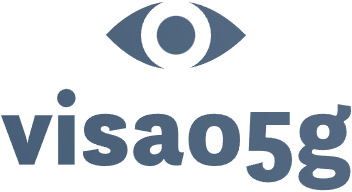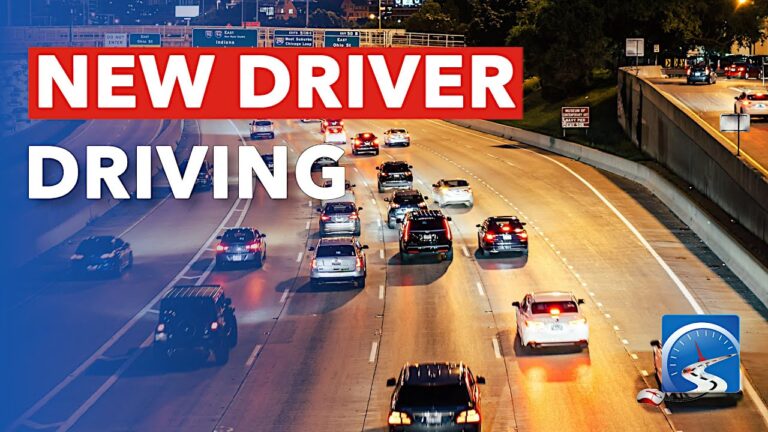Anúncios
Navigating the realm of automotive insurance can be challenging; however, understanding its fundamental aspects is crucial for every driver.
This guide elucidates various coverage types, such as liability, collision, and comprehensive protection, while also highlighting the factors that influence insurance rates. It provides insight into the process of obtaining automotive insurance, the necessary documentation, and effective strategies for comparing prices and benefits.
By following this guidance, individuals can simplify their journey toward securing the most suitable coverage for their specific needs.
Anúncios
Understanding Automotive Insurance
A comprehensive understanding of automotive insurance is crucial for car owners seeking to safeguard their vehicles and financial interests.
Automotive insurance includes various coverage options, such as liability coverage, collision coverage, and comprehensive coverage, each designed to address specific requirements.
By comparing prices and policy terms from multiple insurance providers, consumers can obtain optimal auto coverage while taking advantage of potential discounts and understanding their rights as policyholders.
This process typically involves obtaining insurance quotes, assessing risk factors, and familiarizing oneself with state regulations to ensure compliance and adequate protection against unforeseen circumstances.
What is Automotive Insurance?
Automotive insurance, commonly referred to as car insurance, is a contractual agreement between the policyholder and an insurance provider that offers financial protection against various risks associated with vehicle ownership.
This coverage is essential as it protects individuals from the financial burdens that may arise in the event of an accident, theft, or damage to their vehicle. Generally, automotive insurance encompasses several types of coverage, including:
- Liability coverage, which protects against claims made by other drivers;
- Collision coverage, which addresses damages to one’s own vehicle resulting from an accident;
- Comprehensive coverage, which safeguards against non-collision-related incidents, such as vandalism or natural disasters.
By investing in these policies, vehicle owners can ensure they are not solely responsible for the fiscal impact of unforeseen events, thereby providing peace of mind and financial security.
Types of Automotive Insurance Coverage
Various types of automotive insurance coverage are available to address diverse driving needs.
The most common options for policyholders include:
- Liability coverage
- Collision coverage
- Comprehensive coverage
Liability Coverage
Liability coverage is the most fundamental type of automotive insurance, designed to protect policyholders from financial loss in the event they are found responsible for injuring others or damaging their property.
This essential component of auto insurance comprises two primary segments: bodily injury coverage and property damage coverage.
- Bodily injury coverage addresses medical expenses and lost wages for any injured parties.
- Property damage coverage is responsible for repairs or replacement of the other party’s vehicle or property.
Each state has specific minimum coverage requirements to ensure that drivers maintain at least a baseline level of protection. Understanding these components is crucial, as adequate liability coverage not only fulfills legal obligations but also provides peace of mind in potentially hazardous situations on the road.
Collision Coverage
Collision coverage is a fundamental aspect of automotive insurance that provides financial assistance for repairs to a policyholder’s vehicle following an accident, irrespective of fault.
This type of insurance is crucial for protecting against unforeseen repair expenses, which can be substantial depending on the extent of the damage. In case of a covered accident, the insurance policy comes into effect, enabling the individual to file a claim for the required repairs.
Policyholders should note that the amount reimbursed may be influenced by their deductible, which represents the out-of-pocket expense they must cover prior to the initiation of insurance benefits.
A higher deductible may result in lower monthly premiums; however, it also increases the financial responsibility incurred when filing a claim. Therefore, comprehending the relationship between collision coverage costs and their impact on overall premiums is essential for making informed decisions regarding insurance.
Comprehensive Coverage
Comprehensive coverage provides protection against non-collision incidents, offering policyholders reassurance in circumstances such as theft, vandalism, or damage resulting from natural disasters.
This type of coverage is essential as it extends beyond the fundamental aspects of liability and collision insurance, establishing a robust safety net for vehicle owners.
It encompasses various incidents, including fire, flooding, and falling objects, which are often beyond the driver’s control. By selecting this protection, individuals not only safeguard their investment but also ensure they are financially equipped to handle unforeseen events.
Therefore, incorporating comprehensive coverage into an auto insurance portfolio is not merely prudent; it is a fundamental aspect of responsible vehicle ownership.
Factors that Affect Automotive Insurance Rates
Multiple factors impact automotive insurance rates, with a policyholder’s driving record, the type of vehicle, and geographical location serving as significant determinants in how insurance providers evaluate risk and establish premiums.
Driving Record and History
A policyholder’s driving record serves as a critical determinant in automotive insurance rates, as insurance providers evaluate previous accidents, traffic violations, and claims history to assess risk.
This comprehensive assessment indicates that individuals with a clean driving history often enjoy significantly lower premiums, reflecting their reduced likelihood of filing a claim.
Conversely, those with a poor driving record, characterized by frequent tickets or accidents, may encounter substantial increases in their rates. Accumulated points on a driver’s license can profoundly impact this evaluation, serving as a warning signal for insurers who prioritize safety and reliability.
Maintaining an impeccable driving record is essential not only for personal safety but also carries considerable financial implications, underscoring the importance of responsible driving behavior.
Vehicle Type and Usage
The type of vehicle and its usage significantly influence automotive insurance premiums, with factors such as safety ratings, repair costs, and the overall risk assessment of the vehicle playing a crucial role.
For example, sport utility vehicles (SUVs), which are often preferred for their spacious interiors and perceived safety benefits, may result in higher premiums due to their larger size and increased repair costs following an accident.
In contrast, sedans, generally recognized for their superior fuel efficiency and lower initial costs, may present a more economical option for insurance.
Additionally, the distinction between vehicles intended for daily commuting and those designed for leisure use can further affect insurance rates. Vehicles used for daily commuting typically involve more frequent driving, thereby increasing the likelihood of accidents and, consequently, higher insurance costs.
Taking these factors into account can facilitate more informed decisions regarding vehicle selection and insurance coverage.
Location and Insurance Company
The location of a policyholder’s residence can significantly influence automotive insurance rates, as different regions present varying levels of risk associated with theft, accidents, and local regulations governing coverage.
In urban areas, for instance, the high density of vehicles and increased traffic congestion often lead to elevated accident rates, resulting in higher premiums for residents. Conversely, rural areas typically experience lower traffic levels and reduced likelihood of collisions, which may contribute to lower insurance costs.
State regulations also play a crucial role in shaping the insurance landscape, as each state has its own legal requirements and guidelines that insurers must adhere to. Additionally, the choice of insurance company can affect an individual’s premium; while some insurers may focus on urban markets, others may target rural demographics, offering specialized packages that address the distinct risks associated with each environment.
How to Get Automotive Insurance
Obtaining automotive insurance involves a series of steps that begin with the collection of necessary documentation.
Following this, it is important to obtain insurance quotes from various providers, which can be accomplished through online platforms or by consulting with insurance brokers.
Steps to Take and Documents Needed
To successfully apply for automotive insurance, individuals should adhere to a systematic approach that includes gathering essential documents such as proof of identity, vehicle registration, and prior insurance information.
This initial phase establishes a solid foundation, ensuring that all necessary paperwork is readily available. It is also advisable to compile detailed specifications of the vehicle, including its make, model, and year, as this information significantly impacts the insurance premiums.
Additionally, creating a comprehensive list of any driving violations or claims can provide insurers with a clearer picture of the applicant’s history. By meticulously preparing the required documentation, potential policyholders enhance their ability to obtain the most suitable automotive insurance coverage.
Furthermore, comparing quotes from multiple providers is essential; utilizing online tools can streamline this process and illuminate the differences in coverage options and costs.
Comparing Prices and Benefits
In the realm of automotive insurance, it is essential for policyholders to compare prices and benefits across various providers. This practice enables individuals to make informed decisions that align with their specific needs.
Factors to Consider when Comparing
When comparing automotive insurance policies, it is essential to consider several factors, including coverage limits, deductibles, premiums, and the overall customer service reputation of the insurance company.
Evaluating these elements is crucial to ensuring that the selected policy aligns with individual needs and financial circumstances. A thorough assessment of comprehensive coverage enables an understanding of the perils that are protected, as well as any potential gaps in coverage that may exist.
Additionally, reviewing customer feedback provides valuable insights into the insurer’s responsiveness and reliability during the claims process, which is often where the true value of a policy becomes evident.
By taking into account both coverage options and customer experiences, individuals can make a more informed decision that not only protects their vehicle but also meets their expectations for service quality.
Using Online Tools and Resources
Utilizing online tools and resources can significantly streamline the process of obtaining automotive insurance, enabling policyholders to efficiently compare quotes and calculate potential premiums.
These digital platforms not only conserve valuable time but also enhance the understanding of policy features and coverage options. For example, insurance calculators assist users in estimating their monthly payments based on various factors, such as the type of vehicle and driving history.
Additionally, insurance marketplaces present a comprehensive overview of different insurers, facilitating a side-by-side comparison of the advantages and disadvantages of various plans.
Furthermore, these resources often feature user-friendly interfaces that guide individuals through the decision-making process, enableing them to make informed choices that align with their specific needs.
Frequently Asked Questions
How do I get automotive insurance?
To get automotive insurance, you will need to first research and compare different insurance providers to find the best coverage and price for your needs. You can do this online or by contacting insurance companies directly. Once you have chosen a provider, you will need to fill out an application and provide information about your vehicle and driving history.
What factors should I consider when comparing prices and benefits?
When comparing prices and benefits for automotive insurance, it is important to consider the coverage options, deductibles, and limits offered by each provider. You should also take into account any discounts or special offers that may be available, as well as the reputation and customer service of the insurance company.
Can I get auto insurance without a valid driver’s license?
Typically, auto insurance companies require a valid driver’s license in order to provide coverage. However, some companies may offer non-standard policies for drivers with suspended or revoked licenses. It is important to check with the specific insurance provider for their requirements.
How can I save money on automotive insurance?
There are several ways to save money on automotive insurance. One way is to compare quotes from multiple providers to find the best price. You can also consider raising your deductible or bundling your auto insurance with other types of insurance, such as homeowners or renters insurance. Additionally, maintaining a good driving record and taking advantage of any available discounts can also help lower your insurance premiums.
What types of coverage should I consider for automotive insurance?
The most common types of automotive insurance coverage include liability, collision, comprehensive, and uninsured/underinsured motorist coverage. It is important to carefully consider your needs and budget to determine which types of coverage are necessary for you. In some cases, additional types of coverage such as roadside assistance or rental car coverage may also be beneficial.
How often should I review my automotive insurance policy?
It is recommended to review your automotive insurance policy at least once a year or whenever a major life change occurs, such as buying a new car or moving to a new location. This will ensure that you have the appropriate coverage for your current needs and can make any necessary adjustments to your policy. It is also a good idea to regularly compare prices and benefits from different providers to ensure you are getting the best deal.






